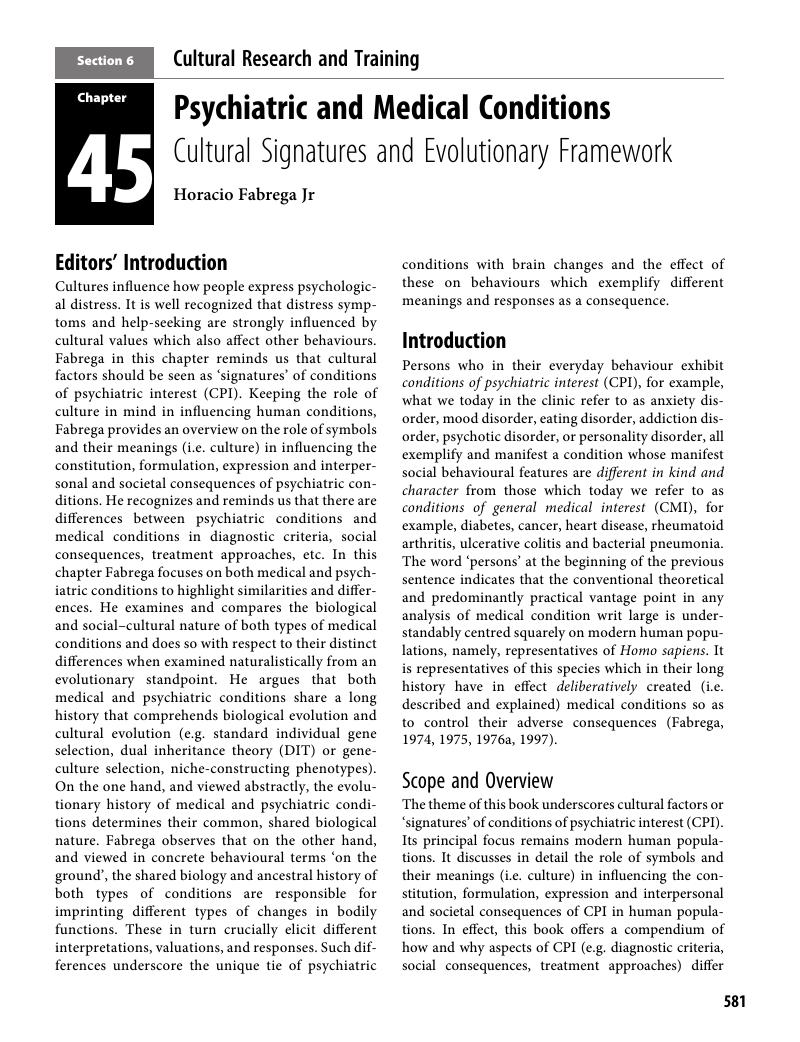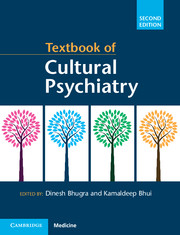Book contents
- Textbook of Cultural Psychiatry
- Textbook of Cultural Psychiatry
- Copyright page
- Dedication
- Contents
- Contributors
- Foreword
- Preface to the Second Edition
- Section 1 Theoretical Background
- Section 2 Culture and Mental Health
- Section 3 Culture and Mental Disorders
- Section 4 Theoretical Aspects of Management
- Section 5 Management with Special Groups
- Section 6 Cultural Research and Training
- Chapter 45 Psychiatric and Medical Conditions
- Chapter 46 Globalization, Social Stressors and Psychiatry
- Chapter 47 Cultural Psychiatry
- Index
- References
Chapter 45 - Psychiatric and Medical Conditions
Cultural Signatures and Evolutionary Framework
from Section 6 - Cultural Research and Training
Published online by Cambridge University Press: 16 March 2018
- Textbook of Cultural Psychiatry
- Textbook of Cultural Psychiatry
- Copyright page
- Dedication
- Contents
- Contributors
- Foreword
- Preface to the Second Edition
- Section 1 Theoretical Background
- Section 2 Culture and Mental Health
- Section 3 Culture and Mental Disorders
- Section 4 Theoretical Aspects of Management
- Section 5 Management with Special Groups
- Section 6 Cultural Research and Training
- Chapter 45 Psychiatric and Medical Conditions
- Chapter 46 Globalization, Social Stressors and Psychiatry
- Chapter 47 Cultural Psychiatry
- Index
- References
Summary

- Type
- Chapter
- Information
- Textbook of Cultural Psychiatry , pp. 581 - 606Publisher: Cambridge University PressPrint publication year: 2018



